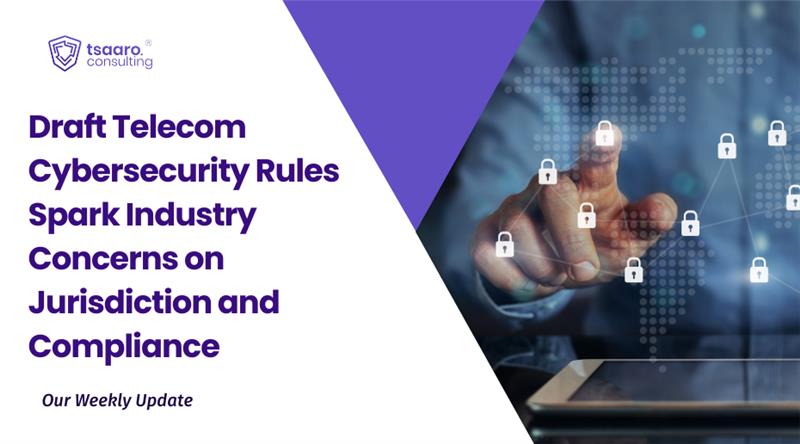The world entered an age of internet connectivity at the end of the 20th century, which has now grown to a digitally hyperconnected dome within which we live our daily lives. Organizations and governmental institutions have since focused on building strong locks on these digital doors with the help of technical safeguards such as firewalls, encryption, and multi-factor authentication to keep cyber threats at bay. However, what if the weakest link is not in the digital system but in the people using it?
This blog explores social engineering, which has existed for a prolonged period in human history, from a data privacy perspective. Social engineering in the Internet age, the impact of artificial intelligence (AI) on the threat landscape, and how individuals and businesses can protect themselves are discussed.
What Is Social Engineering
Social engineering is a feature of human psychology that focuses on how humans behave and uses that information to achieve malicious goals. It involves the use of manipulative tactics to create a situation wherein people give away sensitive information, download malware, click malicious links, or even wire funds. It is unlike brute force or technical hacks; rather, it works by exploiting human emotions, such as trust, urgency, fear, or curiosity. The consequences of social engineering are real, as it can lead to the breach of sensitive data, identity theft, financial fraud, and unauthorized access to networks, all without writing a single line of code. As of 2025, human error has been the cause of 60% of all data breaches in the US, according to the Verizon Data Breach Investigation Report.
How Social Engineering Works in the Age of the Internet
While the concept of Social Engineering is far older than the Internet, the potential risk caused by the same has exponentially increased with most of our lives being brought online. Attackers now have more surface area to exploit than ever before, and emails, social media, work messaging apps, fake websites, and online forms are all potential entry points.
Although there are many techniques and approaches within the broader concept of social engineering, there is a basic structure for an attack:
- Reconnaissance – The attacker gathers information about the target (such as company structure, personal interests, and email patterns).
- Engagement – Actual interactions between the attacker and victim wherein the attacker may impersonate someone the target trusts (boss, IT team, delivery service, bank).
- Exploitation – The target/victim is then manipulated to take an action (click, download, share credentials) that would compromise the integrity of any secure digital system, allowing the attacker to fulfil their target (receive access to sensitive data, compromise or interrupt systems, conduct financial fraud, etc.).
- Execution – The attacker uses the obtained access to steal data, deploy malware, or escalate the privileges.
This model works whether the attacker is after a corporate database or a single user’s banking credentials. It often works better than technical hacks because it does not involve breaching several security measures implemented to protect against these specific attacks.
Common Techniques Used in Social Engineering
The most widely used forms of social engineering in the current threat landscape are as follows:
- Phishing: The most common tactic is the use of fraudulent emails or messages that appear legitimate but are designed to collect login credentials or install malware. Spear Phishing targets specific individuals using personalized information. Phishing can be done via both SMS and voice calls, and the user needs to remain attentive while disclosing any information.
- Pretexting – Attackers fabricate a believable scenario wherein they attempt to impersonate a person with authority (“We’re from the IT team doing a routine security check”) to convince victims to reveal sensitive personal information or perform actions as desired.
- Baiting: Offering something enticing, such as a free download, USB drive, or fake prize, to lure a victim into installing malware or giving up credentials.
- Tailgating and Piggybacking – In physical security, attackers may follow employees into secure areas. While this may seem outdated, it remains relevant in hybrid work environments.
- Quid Pro Quo – Attackers offer a benefit (“technical support” or a gift card) in exchange for information or access. A common variation is fake IT support calls asking for your password.
The Role of AI: Making Social Engineering Smarter and Scarier
The rise of AI-driven tools has made social engineering easier and more convincing than ever. Here’s how:
- Deepfake Audio & Video: Attackers can clone voices or create videos to impersonate CEOs, making fraudulent requests sound legitimate.
- AI-generated Phishing: Gen-AI tools similar to ChatGPT are being used to craft hyper-personalized emails with perfect grammar and contextual relevance.
- Social Media Mining: AI can scrape massive amounts of personal data to build psychological profiles for spear phishing.
The line between authentic and synthetic data is rapidly blurring. Currently, phishing emails are indistinguishable from real ones. Tomorrow, a video call from your manager might not be from your manager at all. The future implication is clear: as AI gets better at mimicking humans, the cost of trust breaches will rise. This poses a critical risk to data privacy and digital identity.
Why Social Engineering Is a Data Privacy Problem
While social engineering is often seen as a cybersecurity issue, it is fundamentally a data privacy issue too.
Most attacks aim to steal personal data, such as names, emails, addresses, credentials, and health records. Successful attacks often exploit the overexposure of data online, publicly visible employee details, birthdays, and location check-ins. Businesses that fail to protect data via poor internal controls become easy targets for attackers who just need to “ask the right person the right question.”
Under modern data privacy laws, such as India’s DPDPA, the EU GDPR, and Singapore’s PDPA, companies are legally required to implement both technical and organizational measures to protect personal data. Falling for a phishing scam does not just lead to a breach; it could lead to fines, lawsuits, and reputation loss.
How to Protect Against Social Engineering
Let’s break this down into protection strategies for both individuals and organizations,
- For Individuals: Social Engineering is directly targeted towards humans and their behavior; thus, it is essential that individuals themselves ensure that they do not fall victim to the use of social engineering approaches by attackers.
First, individuals should practice the policy of ‘stop and verify’, wherein they verify the person they are talking to during an online interaction or call. The same can be done by activating the Caller ID’, checking for verified email addresses, and asking questions instead of responding directly to requests.
Second, individuals should broadly limit the amount of sensitive information they share over a call, text, or email. This can be further extended to not sharing personal information, such as birth dates or work-related details, on publicly available social media sites.
Further privacy-related preventive controls can also be incorporated by individuals. These include:
- Verifying suspicious requests, even if they appear to be urgent or authoritative.
- Using Multi-Factor Authentication (MFA) is one of the most effective ways to prevent account compromise, even if credentials are stolen.
- Using apps (like Google Authenticator or Authy), not SMS-based codes and using a Firewall and Antivirus
- For Organizations: The core focus of organizations has been limited to taking technical measures to protect sensitive data; however, since social engineering relies on human error, a broader approach must be adopted. In addition to technical and preventative measures, such as data minimization and access control, measures directed at employees can be incorporated, such as:
- Employee Awareness Training
- Regular training of teams to recognize phishing, baiting, and impersonation attempts. This can include simulated phishing tests, which can be highly effective (scenario-based training).
- Fast internal reporting procedures for employees can effectively contain damage early.
It has become absolutely essential for organizations to eliminate the risk of social engineering, as not only can their entire systems and functioning be adversely impacted, they can also put to risk all the personal data they process, leading to fines under the GDPR, CCPA, or any other privacy-related legislation. An organization should closely monitor the data exposure of all its employees, and to remain compliant with privacy legislation, it must further implement a plan wherein no non-essential personnel receive access to any sensitive data, whether regarding the organization or the data of private individuals being processed by it.
Conclusion
Social engineering will not disappear. With AI making attackers faster, more convincing, and harder to trace, the threat is only growing. It is no longer just about phishing; it is about manipulating trust at scale and using it to gain access to valuable personal and organizational data.
From a data privacy standpoint, this means that we must go beyond encryption and compliance checklists. We need to build cultures of awareness, verification, and minimal exposure, both at home and at work. While dealing with most of our personal data online, one must try to implement the learning from the Russian proverb “trust but verify.” Trust is valuable, but online, it should always be accompanied by a second factor of verification and authentication.












